How To Plant Lettuce Seeds: Easy Steps for a Bountiful Harvest
- February 22, 2024
- 0 comment
Lettuce is a versatile, nutritious, and easy-to-grow crop, making it a favorite among gardeners of all skill levels. This article provides a step-by-step guide to planting lettuce seeds, ensuring a lush and bountiful harvest.

| Benefit | Description |
|---|---|
| Nutritional Value | Lettuce is low in calories but rich in vitamins and minerals, particularly Vitamin A, K, and C, and folate. |
| Hydration | High water content makes it hydrating and refreshing, ideal for maintaining good hydration levels. |
| Weight Management | Low in calories and high in fiber, which can aid in weight loss and management. |
| Digestive Health | The fiber in lettuce helps in improving digestion and preventing constipation. |
| Heart Health | Contains heart-friendly nutrients like potassium and magnesium, which contribute to cardiovascular health. |
| Anti-inflammatory | Contains lactucarium, which has mild pain-relieving and anti-inflammatory properties. |
| Sleep Aid | Lettuce has sedative properties that can help in inducing sleep and reducing anxiety. |
| Bone Health | High in Vitamin K, which is essential for bone health and prevention of osteoporosis. |
| Skin Health | Antioxidants like Vitamin A and C in lettuce contribute to healthy skin and protection against UV rays. |
| Immune System Support | Rich in vitamins and minerals that help in boosting the immune system. |
Choosing the Right Variety
Lettuce comes in various types, including Romaine, Butterhead, Iceberg, and Loose-Leaf. Each variety has its unique taste, texture, and growing requirements. Research and select a variety that suits your climate and taste preferences.
Romaine Lettuce
- Taste and Texture: Romaine lettuce is known for its crisp, firm leaves and a slightly bitter taste. It’s often used in Caesar salads.
- Growing Requirements: It prefers cooler weather but can tolerate more heat than some other varieties. It grows best in well-drained soil and requires consistent watering.
- Climate Suitability: Adaptable to a wide range of climates but thrives in cooler temperatures.
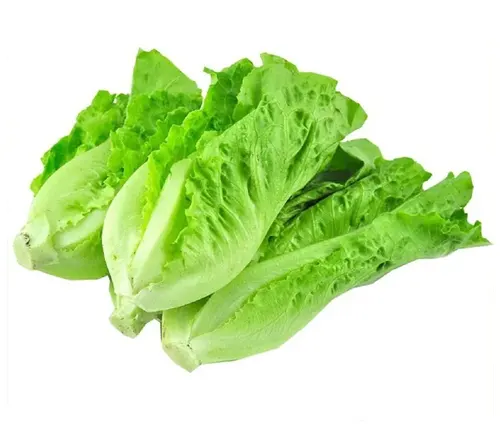
Butterhead Lettuce (Boston and Bibb varieties)
- Taste and Texture: This variety is known for its soft, buttery leaves and sweet flavor. The leaves are tender with a smooth texture.
- Growing Requirements: It requires well-drained, fertile soil and consistent moisture. It’s more heat-sensitive, preferring cooler climates.
- Climate Suitability: Ideal for cooler regions, especially in spring and fall.
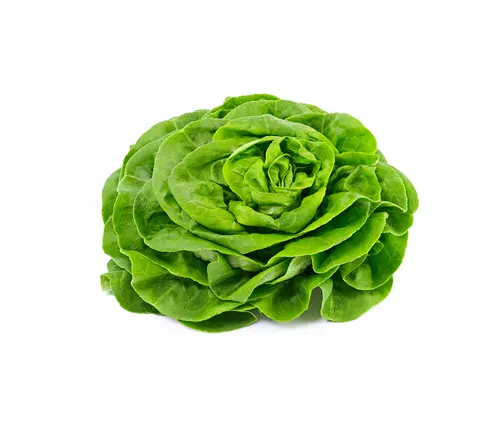
Iceberg Lettuce
- Taste and Texture: Iceberg is popular for its crunchy texture. It has a mild flavor and is commonly used in salads and sandwiches.
- Growing Requirements: It needs well-drained soil and can tolerate more heat than butterhead varieties. It requires regular watering.
- Climate Suitability: It can be grown in a variety of climates but does best in cooler conditions.

Loose-Leaf Lettuce (Includes varieties like Oak Leaf and Red Leaf)
- Taste and Texture: These varieties have a more vibrant flavor compared to iceberg lettuce and a softer, more delicate texture.
- Growing Requirements: Loose-leaf lettuce is one of the easiest varieties to grow. It tolerates a range of soil types and is somewhat heat resistant.
- Climate Suitability: It can be grown in most climates and is particularly suited for small gardens or container gardening.

- Climate: Some varieties like cooler weather (Butterhead, Romaine), while others are more tolerant of heat (Iceberg, Loose-Leaf).
- Space: If you have limited space, Loose-Leaf or Butterhead might be more suitable as they are less sprawling than Iceberg or Romaine.
- Harvest Time: If you want a quick harvest, Loose-Leaf varieties are a good choice as they mature faster.
- Culinary Use: Think about how you plan to use the lettuce. For sandwiches and crunchy salads, Iceberg or Romaine is ideal. For a more delicate salad, consider Butterhead or Loose-Leaf varieties.
Preparing the Soil
Soil Texture and Structure

- Loose Soil: Lettuce roots are delicate and shallow. They thrive in loose, crumbly soil as it allows for easy root penetration and growth. Compacted soil should be avoided as it can hinder root development and water absorption.
- Well-Drained Soil: Good drainage is essential to prevent waterlogging, which can lead to root rot. While lettuce needs consistent moisture, it doesn’t fare well in soggy conditions. Amending the soil with organic matter can improve its drainage capabilities.
Enriching with Organic Matter
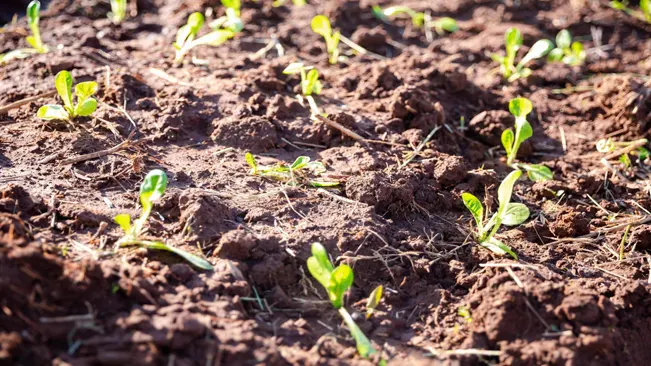
- Compost: Adding compost to the soil provides a wealth of benefits. It improves soil structure, enhances drainage, and increases the soil’s ability to retain moisture. Compost also provides essential nutrients that support healthy plant growth.
- Aged Manure: Like compost, aged manure is an excellent soil amendment. It’s rich in nutrients and helps improve soil fertility and texture. Fresh manure should be avoided as it can burn plants and may contain pathogens.
Soil pH
- pH Level: Lettuce prefers a slightly acidic to neutral pH, ranging from 6.0 to 7.0. Soil pH affects nutrient availability; outside this range, some nutrients may become less available to the plants.
- Testing and Adjusting pH: It’s advisable to test your soil’s pH using a soil test kit. If the pH is too low (acidic), incorporating lime can raise it. If it’s too high (alkaline), adding sulfur or peat moss can lower it.
Preparing the Bed
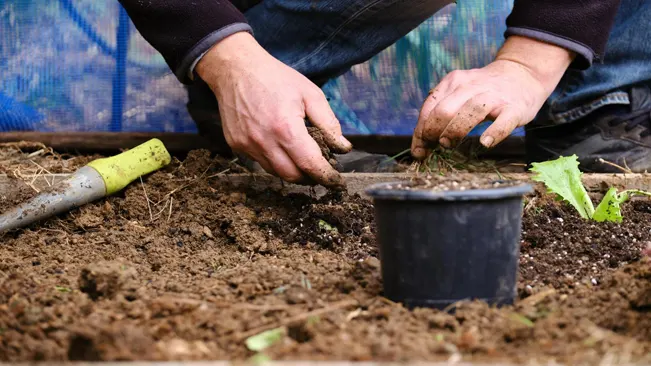
- Tilling or Turning the Soil: Before planting, it’s essential to till or turn the soil to a depth of about 8-12 inches. This process breaks up large clumps of soil, removes rocks and debris, and aerates the soil.
- Leveling and Smoothing: After tilling, level and smooth the surface of the soil. This creates a uniform bed for planting and ensures even water distribution.
Mulching
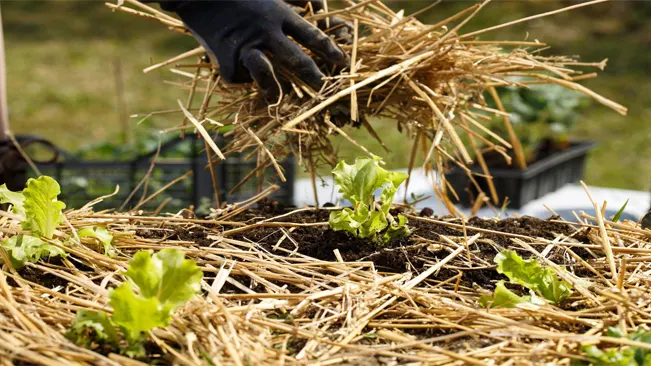
- Purpose of Mulch: Applying a layer of mulch around lettuce plants can help retain soil moisture, regulate soil temperature, and suppress weed growth.
- Types of Mulch: Organic mulches like straw, bark, or shredded leaves are ideal. They also break down over time, adding organic matter back into the soil.
Ongoing Soil Care
- Regular Monitoring: Keep an eye on soil moisture levels and adjust watering as needed. During the growing season, it’s also important to monitor for signs of nutrient deficiencies or pH imbalances.
- Seasonal Maintenance: At the end of the growing season, it’s beneficial to add more compost or manure to prepare the soil for the next planting.
Sowing the Seeds
Direct Sowing vs. Starting Indoors
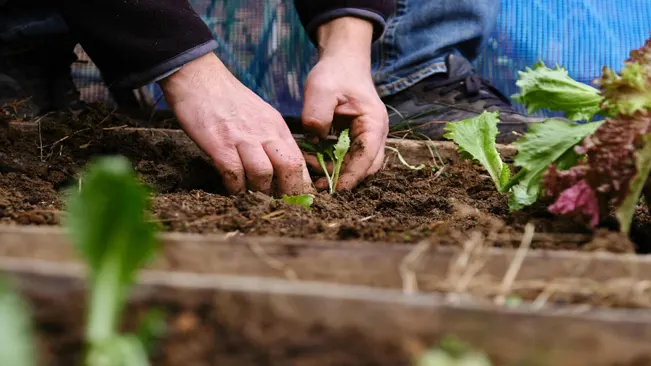
- Direct Sowing: This involves planting seeds directly in your garden soil. It is typically done in early spring or late summer, as lettuce prefers cooler weather. Direct sowing is ideal for gardeners who want a simple and straightforward method.
- Starting Indoors: This method involves growing lettuce seeds in containers or seed trays inside your home before transplanting them outside. It allows for an earlier start to the growing season, especially in regions with short growing periods. Seedlings are usually ready to be transplanted 4-6 weeks after sowing.
Planting Depth and Seed Spacing
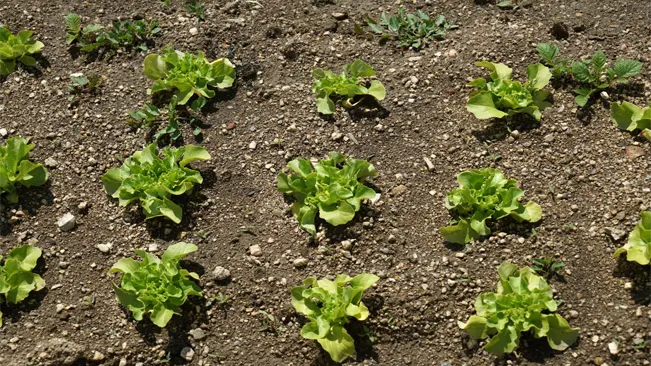
- Depth: Lettuce seeds need light to germinate, so they should be planted shallowly, about ¼ inch deep. If seeds are planted too deep, they might not germinate effectively.
- Spacing: Proper spacing is crucial for the development of lettuce. Generally, seeds should be spaced about 1 inch apart. After germination and as seedlings grow, thin them out to allow 4-6 inches of space between each plant. This spacing depends on the lettuce variety, as some types, like head lettuces, may require more room.
Row Planting
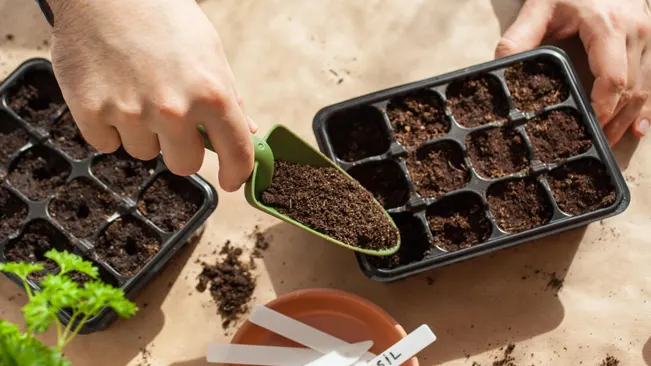
- When planting in rows, maintain a distance of about 12-18 inches between each row. This spacing allows for easier access for watering, weeding, and harvesting. It also ensures adequate air circulation around the plants, reducing the risk of disease.
Watering After Sowing
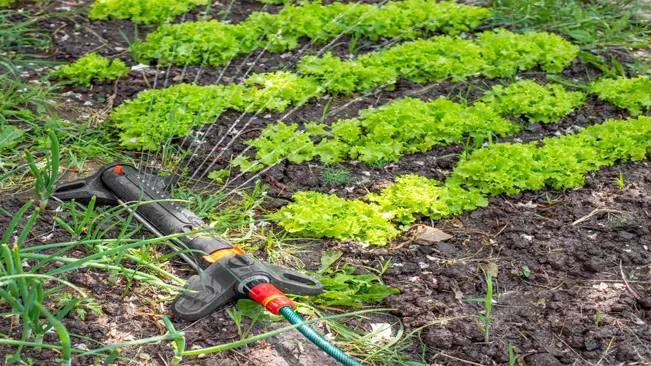
- After sowing, it’s important to water the area gently but thoroughly. The soil should be kept consistently moist but not waterlogged. A light mist or a sprinkle is often recommended to avoid disturbing the shallowly planted seeds.
Germination
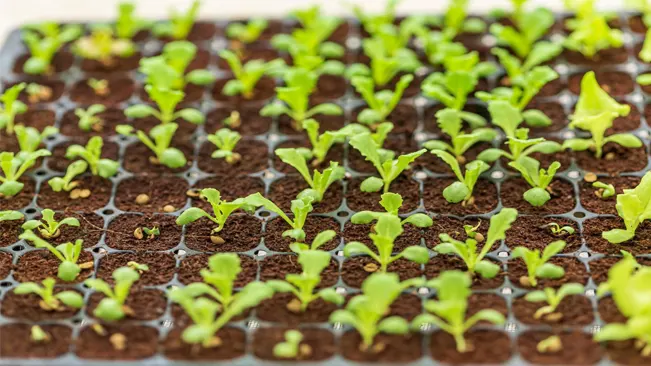
- Lettuce seeds typically begin to germinate within 7 to 14 days. The soil temperature should be kept around 60-68°F (15-20°C) for optimal germination. Cooler soil temperatures can delay germination, and very high temperatures can inhibit it.
Light Requirements
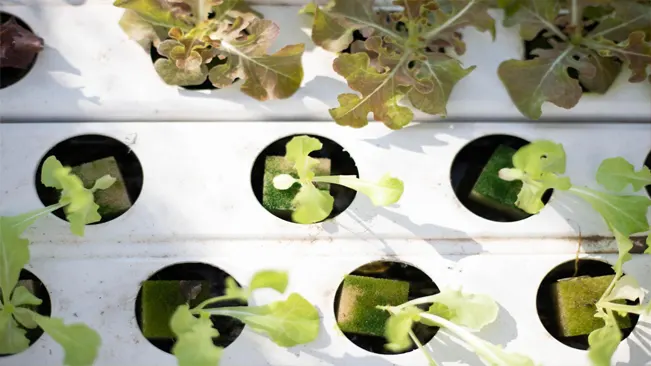
- Lettuce seeds and seedlings require plenty of light. When starting seeds indoors, ensure they are placed in a well-lit area or use grow lights to provide adequate light.
Transplanting Seedlings
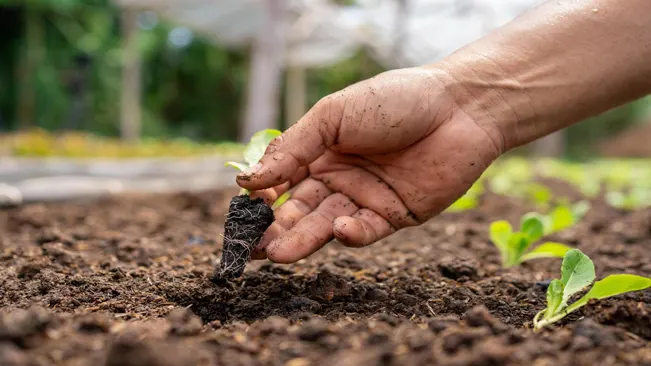
- If you start your seeds indoors, transplant them into your garden once they’ve grown strong enough and the outdoor temperatures are suitable. Harden off the seedlings by gradually introducing them to outdoor conditions over a week before transplanting to avoid shock.
Water Wisely
Lettuce needs consistent moisture to grow properly. Water the seeds gently to avoid washing them away and keep the soil evenly moist but not waterlogged. Using a mulch layer can help retain soil moisture and control weeds.
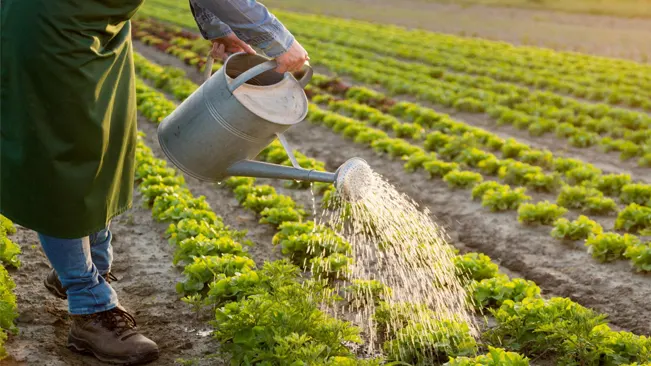
- Gentle Watering: When watering lettuce seeds or seedlings, it’s crucial to use a gentle approach. A strong water flow can displace or wash away the tiny seeds. Use a watering can with a fine sprinkle or a gentle spray setting on a hose to mimic light rain.
- Consistent Moisture: Lettuce roots are relatively shallow, and they require a consistent supply of moisture as they can’t reach deeply for water. This means you should water them frequently, especially during dry spells. In hot weather, lettuce may need watering every day.
- Avoid Waterlogging: While consistent moisture is vital, too much water can be detrimental. Overly wet soil can lead to root rot and other diseases. Ensure that your garden bed or container has good drainage. If you notice standing water after watering, it’s a sign of overwatering or poor drainage.
- Morning Watering: The best time to water lettuce is in the morning. This allows the leaves to dry out during the day, reducing the risk of fungal diseases that can occur if leaves remain damp overnight.
- Mulching: Applying a layer of organic mulch around your lettuce plants can be highly beneficial. Mulch helps retain soil moisture by reducing evaporation and also keeps the soil cooler. Additionally, it suppresses weed growth, which competes with your lettuce for water and nutrients.
- Monitoring Soil Moisture: Checking the soil moisture regularly is important. The soil should feel moist to the touch, but not soggy. A simple way to check is to stick your finger into the soil up to the first knuckle; if it feels dry at your fingertip, it’s time to water.
- Adapting to Weather Conditions: Be flexible with your watering schedule based on weather conditions. Rainy, overcast days will require less frequent watering, while hot, sunny days may necessitate more frequent watering.
Fertilizing for Success

Understanding Fertilizers for Lettuce
- Balanced Fertilizer: A balanced fertilizer typically contains equal parts of the primary nutrients: nitrogen (N), phosphorus (P), and potassium (K). These are often represented by a ratio like 10-10-10 or 20-20-20 on fertilizer packages. For lettuce, balanced fertilizers promote overall plant health, leaf development, and root growth.
- Water-Soluble Fertilizers: These fertilizers dissolve in water and are applied using a watering can or hose-end sprayer. The advantage of water-soluble fertilizers is that they are immediately available to the plant. This is particularly useful for fast-growing plants like lettuce, which can quickly utilize the nutrients.
Application Tips
- Frequency: Applying fertilizer every two weeks is a general guideline. This schedule aligns well with the rapid growth cycle of lettuce, ensuring that the plants have a steady supply of nutrients throughout their growth.
- Application Method: When applying water-soluble fertilizer, it’s important to follow the instructions on the package for dilution and application rates. Over-application can lead to nutrient burn, where the roots are damaged by excessive nutrients.
- Avoiding Over-Fertilization: Excessive nitrogen can lead to lush leaf growth but can negatively impact the taste and texture of the lettuce. Over-fertilized lettuce might have a more bitter taste and a less desirable texture. It’s essential to find a balance to encourage healthy growth without compromising the quality of the lettuce.
- Observing Plant Health: Keep an eye on your lettuce as it grows. Signs of under-fertilization include slow growth and pale leaves, while over-fertilization can result in very dark green, almost brittle leaves, or stunted growth. Adjust your fertilization practices based on these observations.
Environmental Considerations
- Soil Testing: Before starting your fertilization regimen, it’s a good idea to test your soil. This can provide information on existing nutrient levels and pH, allowing you to tailor your fertilizer use to the specific needs of your soil.
- Organic Options: For those interested in organic gardening, there are organic fertilizers available that can provide the necessary nutrients for lettuce without the use of synthetic chemicals. These might include fish emulsion, seaweed extracts, or composted manure.
- Sustainability: Overuse of fertilizers can lead to runoff, which can contribute to environmental problems like eutrophication in nearby water bodies. Using fertilizers responsibly and according to needs helps in sustainable gardening practices.
Pest and Disease Management
Keep an eye out for common pests like aphids and slugs. Employ organic pest control methods such as neem oil or diatomaceous earth. Rotate your crops each year to prevent soil-borne diseases.
Common Pests
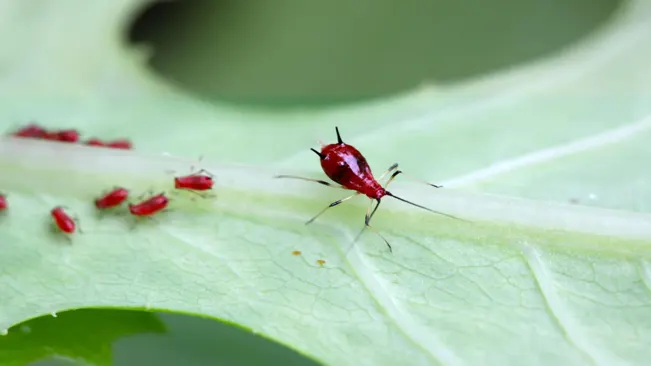
- Aphids: Small, soft-bodied insects that can be green, yellow, black, or brown. They typically feed in clusters on the underside of leaves, causing them to curl and distort. Aphids can also spread viruses from plant to plant.
- Slugs and Snails: These pests are particularly fond of lettuce and can chew large holes in the leaves. They are most active at night or during wet, cloudy weather.
- Caterpillars: Various types of caterpillars may feed on lettuce leaves, leaving irregular holes or skeletonized foliage.
Organic Pest Control Methods

- Neem Oil: An organic pesticide that is effective against a wide range of pests including aphids, caterpillars, and mites. It works as an insecticide, repellent, and fungicide.
- Diatomaceous Earth: A powder made from fossilized algae. When sprinkled around plants, it causes physical damage to the exoskeletons of insects, dehydrating and killing them.
- Companion Planting: Growing certain plants near lettuce can help deter pests. For example, marigolds can repel aphids, and chives can ward off both aphids and mites.
Disease Management
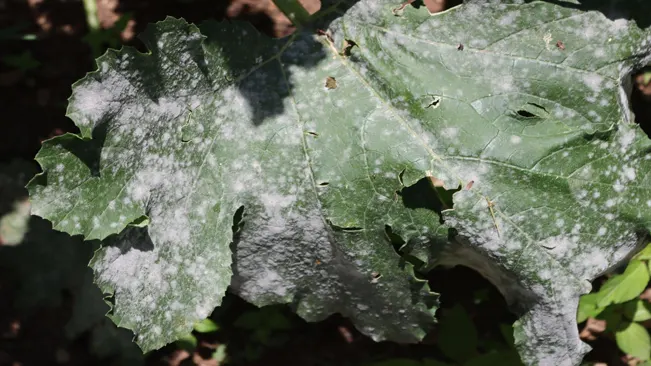
- Crop Rotation: This involves changing the location of your lettuce plants each year. It helps prevent soil-borne diseases like lettuce root rot and fungal infections from building up in the soil.
- Good Air Circulation: Proper spacing of lettuce plants ensures good air circulation, which helps to keep the foliage dry and less susceptible to fungal diseases.
- Avoid Overhead Watering: Water at the base of the plants to keep the foliage dry, reducing the risk of fungal diseases like downy mildew and powdery mildew.
Harvesting Your Lettuce
Harvest lettuce leaves when they’re young and tender for the best flavor. You can pick individual leaves or harvest the entire plant. The more you harvest, the more your lettuce will grow back.
When to Harvest
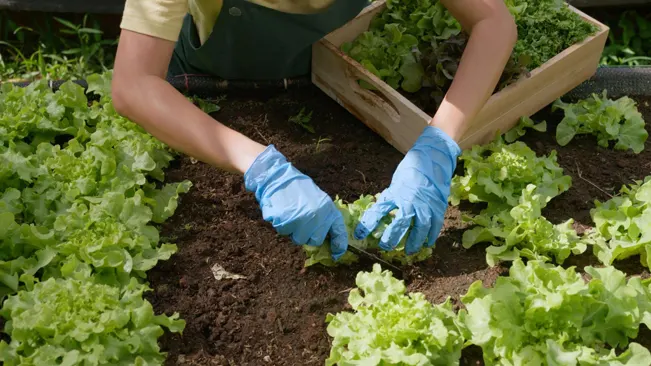
- Young and Tender Leaves: The best time to harvest lettuce is when the leaves are young and tender. This is typically a few weeks after planting, depending on the variety and growing conditions.
- Size of Leaves: Lettuce leaves can be harvested when they are just a few inches long. However, the ideal size may vary based on the lettuce variety.
- Before Bolting: Harvest before the plant bolts (starts to produce a flower stalk), as bolting can cause the leaves to become bitter.
Methods of Harvesting
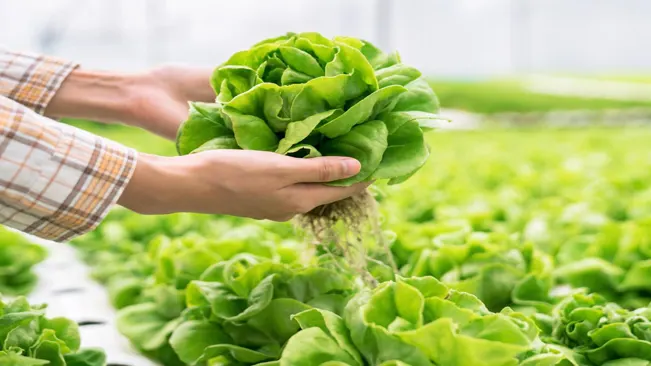
- Leaf-by-Leaf: This method involves picking individual outer leaves, allowing the center leaves to continue growing. It’s a sustainable method that extends the harvest period.
- Cut-and-Come-Again: For loose-leaf varieties, you can cut the entire plant about an inch above the soil line. The plant will often regrow and provide a second or even third harvest.
- Harvesting the Whole Head: For head-forming varieties like Iceberg or Romaine, you usually harvest the entire plant. Cut the base of the lettuce head at soil level with a sharp knife.
Tips for Optimal Harvesting
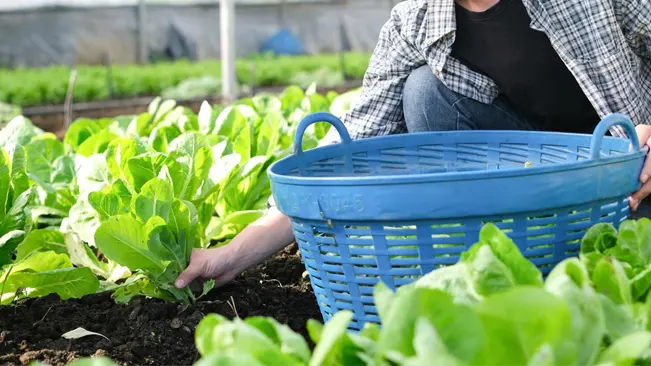
- Harvest in the Morning: Lettuce is crispest in the early morning after the plant has had all night to hydrate.
- Regular Harvesting: Regularly picking leaves can stimulate the plant to produce more foliage.
- Gentle Handling: Handle the leaves gently to avoid bruising, as damaged leaves can deteriorate quickly.
- Wash and Dry: After harvesting, wash the leaves to remove dirt and pests. Dry the leaves thoroughly to prevent them from becoming slimy in storage.
Storing Harvested Lettuce
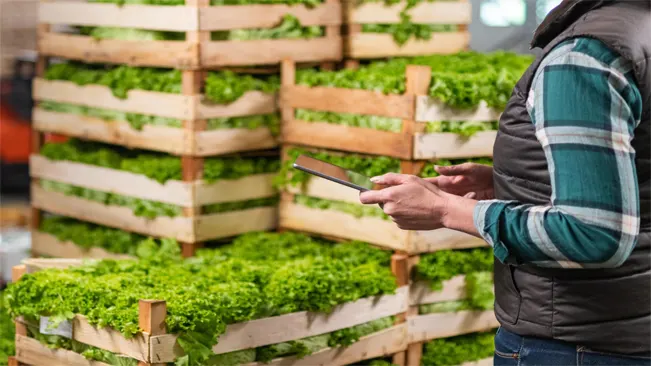
- Refrigeration: Store lettuce in the refrigerator to keep it fresh. Wrapped in a damp paper towel and placed in a plastic bag is often effective.
- Avoid Crushing: Lettuce leaves are delicate; avoid packing them too tightly to prevent bruising and damage.
- Shelf Life: Freshly harvested lettuce can last for about a week in the refrigerator, but this varies by type and freshness at the time of harvesting.
Conclusion
In conclusion, planting lettuce seeds is a straightforward and rewarding gardening activity. Key to success is selecting the right variety for your climate, preparing the soil with rich organic matter, and ensuring consistent moisture and spacing for optimal growth. Regular harvesting encourages more production, allowing you to enjoy a continuous supply of fresh, crisp lettuce from your garden. With minimal effort, even novice gardeners can achieve a bountiful and healthy lettuce
FAQs (Frequently Asked Questions)
- What is the best time of year to plant lettuce seeds?
Lettuce grows best in cool weather, so the ideal time to plant is in early spring or late summer/early fall, avoiding the hot midsummer months. - How deep should I plant lettuce seeds?
Lettuce seeds should be planted about ¼ inch deep in the soil. - How far apart should I space lettuce seeds?
Space lettuce seeds approximately 1 inch apart, and rows should be about 12 to 18 inches apart, depending on the variety. - Do lettuce seeds need light to germinate?
Lettuce seeds require some light to germinate, so avoid burying them too deeply. A light covering of soil or compost is sufficient. - How long does it take for lettuce seeds to germinate?
Lettuce seeds typically germinate within 7 to 14 days, depending on the soil temperature and moisture. - Should I start lettuce seeds indoors or outdoors?
You can start lettuce seeds indoors to get a head start on the season or sow them directly outdoors. Starting indoors is beneficial for controlling growing conditions and protecting seedlings from pests. - What type of soil is best for growing lettuce?
Lettuce prefers well-drained, fertile soil rich in organic matter with a pH between 6.0 and 7.0. - How often should I water lettuce plants?
Lettuce requires consistent moisture. Water the plants regularly, keeping the soil evenly moist but not waterlogged. - When is lettuce ready to harvest?
Lettuce can be harvested when leaves are the desired size. For leaf varieties, this can be as soon as they are several inches tall. Head varieties take longer and are ready when the head feels firm. - Can lettuce be grown in containers?
Yes, lettuce can be successfully grown in containers. Ensure the container is deep enough for root growth and has good drainage.
With these easy steps, you’re on your way to enjoying a lush, bountiful harvest of lettuce. Happy planting and enjoy the fruits of your labor!

Kristine Moore
Forestry AuthorI'm Kristine Moore, a seasoned garden landscaping professional with over 30 years of experience. My extensive career has been dedicated to transforming outdoor spaces into stunning, sustainable landscapes. With a deep understanding of horticulture, design principles, and environmental stewardship, I have become a respected figure in the field, known for creating harmonious, visually appealing, and eco-friendly gardens. My commitment to excellence and continuous learning in landscaping trends and techniques has solidified my reputation as an expert in garden design and implementation.





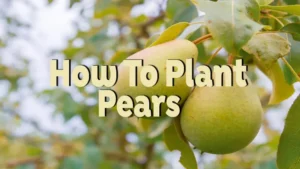







Leave your comment